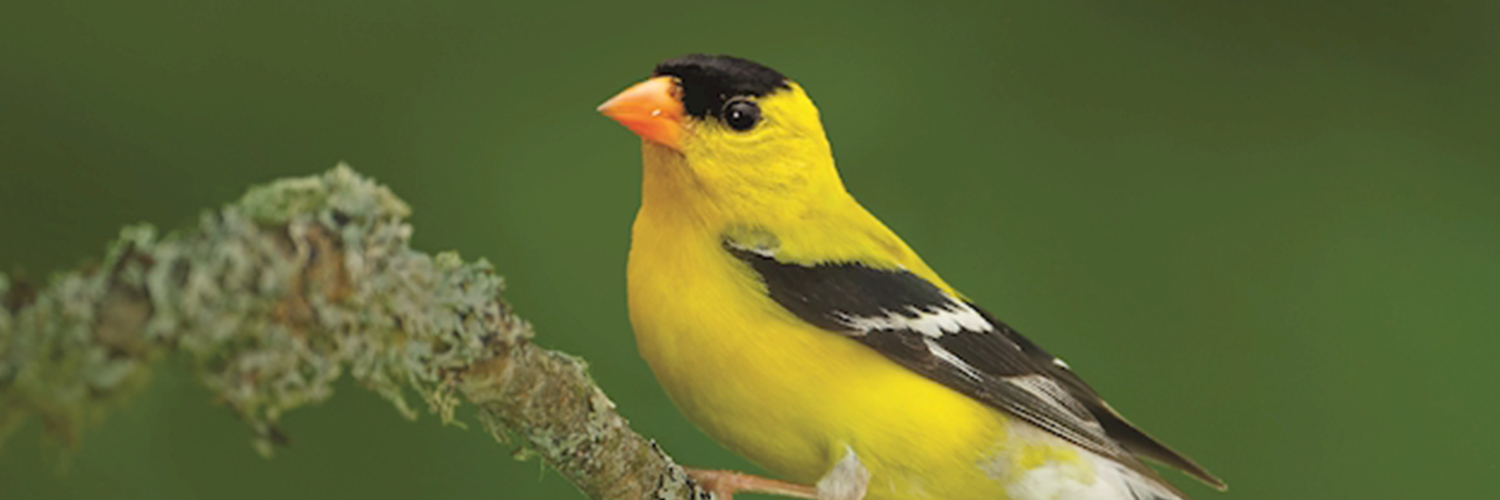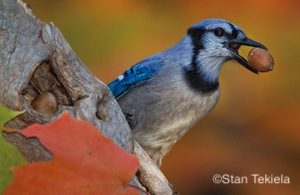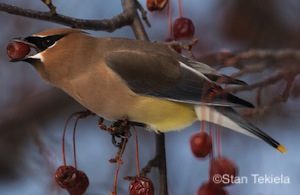
About Birds and Plants
Today, Stan Tekiela, author of Backyard Birds: Welcomed Guests at Our Gardens and Feeders, talks to us about the relationship between birds and plants.
 Often the most complex relationship between birds and nature is right in front of us, but we don’t see it. For example, Blue Jays are critically important for forest regeneration. A number of studies link the dispersal of oak trees to Blue Jays. Jays collect, disperse, and cache oak acorns, then later forget where they hid some. The forgotten acorns sprout into oak trees, which extend the stand from the mother tree almost 400 yards per year.
Often the most complex relationship between birds and nature is right in front of us, but we don’t see it. For example, Blue Jays are critically important for forest regeneration. A number of studies link the dispersal of oak trees to Blue Jays. Jays collect, disperse, and cache oak acorns, then later forget where they hid some. The forgotten acorns sprout into oak trees, which extend the stand from the mother tree almost 400 yards per year.
Blue Jays surpass squirrels as successful oak tree planters. Birds in flight can disperse acorns farther away from the mother tree than a scurrying squirrel. Some botanists even speculate that oak trees with smaller acorns have an evolutionary advantage, as their acorns are more likely to be dispersed by Blue Jays, Acorn Woodpeckers, and other birds, rather than squirrels.
 The same kind of relationship exists between Cedar Waxwings and High Bush Cranberry and Mountain Ash. The edible fruit of these plants is highly nutritious and surrounds a seed. The bird eats the fruit and inadvertently consumes the seed, transporting it inside its body away from the mother plant. In fact, many of these seeds won’t germinate without passing through the digestive tract of the bird first! Later, when the bird eliminates the seed, it lands on the ground well away from the source and starts to grow.
The same kind of relationship exists between Cedar Waxwings and High Bush Cranberry and Mountain Ash. The edible fruit of these plants is highly nutritious and surrounds a seed. The bird eats the fruit and inadvertently consumes the seed, transporting it inside its body away from the mother plant. In fact, many of these seeds won’t germinate without passing through the digestive tract of the bird first! Later, when the bird eliminates the seed, it lands on the ground well away from the source and starts to grow.
If you enjoyed Stan’s post, you may consider one of his amazing nature books: Majestic Eagles; The Lives of Wolves, Coyotes, and Foxes; or Backyard Birds: Welcomed Guests at our Gardens and Feeders. Young readers will delight in his award-winning children’s books, such as Whose Butt?, Critter Litter, and his latest, Jump, Little Wood Ducks.
You can follow Stan on Facebook and Twitter, or contact him via his web page. Stan’s nationally syndicated NatureSmart Column appears in more than 25 cities spanning 5 states (Minnesota, Wisconsin, Michigan, Illinois, and Pennsylvania) and is circulated to more than 750,000 readers. Stan’s author page on Amazon features some amazing videos! Check them out, and follow him for updates.
For more stories about wildlife and nature, sign up for our newsletter now!
More posts from Stan:
Indigo Bunting—A Familiar Summer Visitor
The Nesting Behaviors of Sandhill Cranes
Big Birds, Baby Birds, Birds Everywhere
Stan Tekiela observes Marsh Wrens
The Magical, Mystical World of Sandhill Cranes


